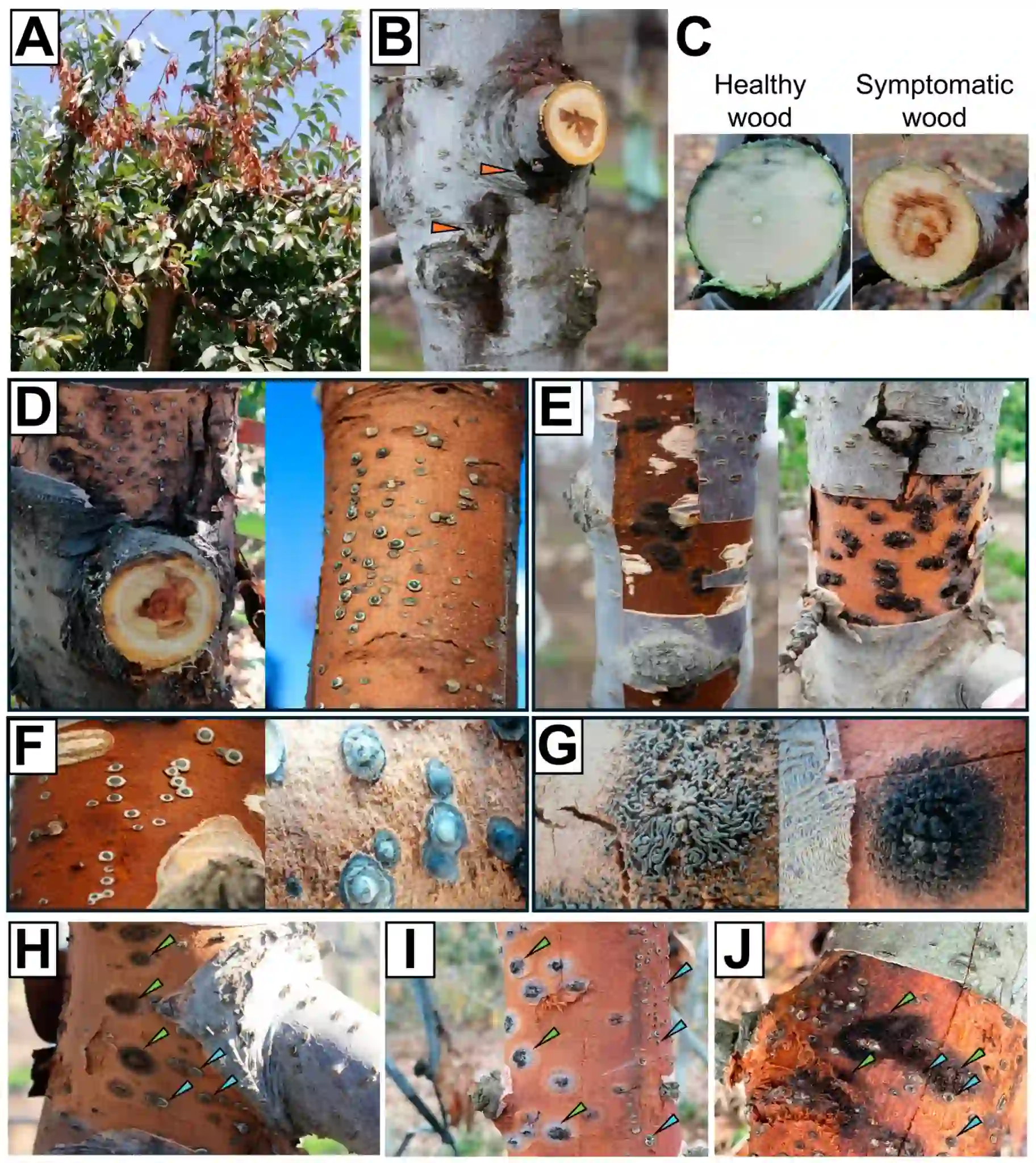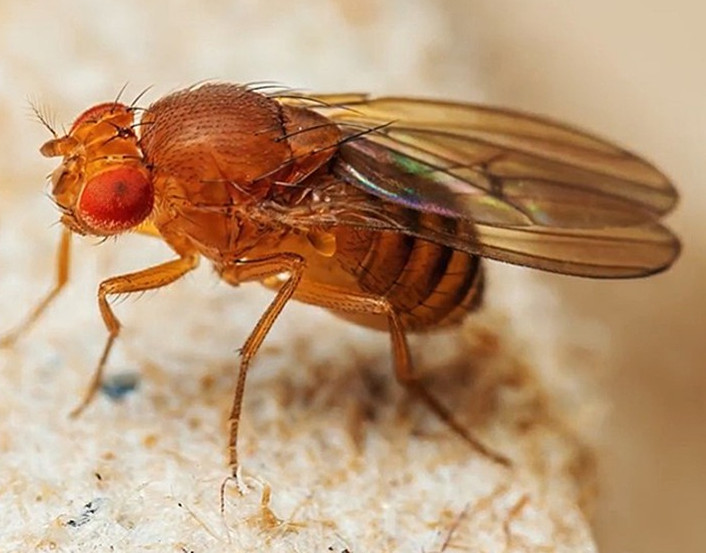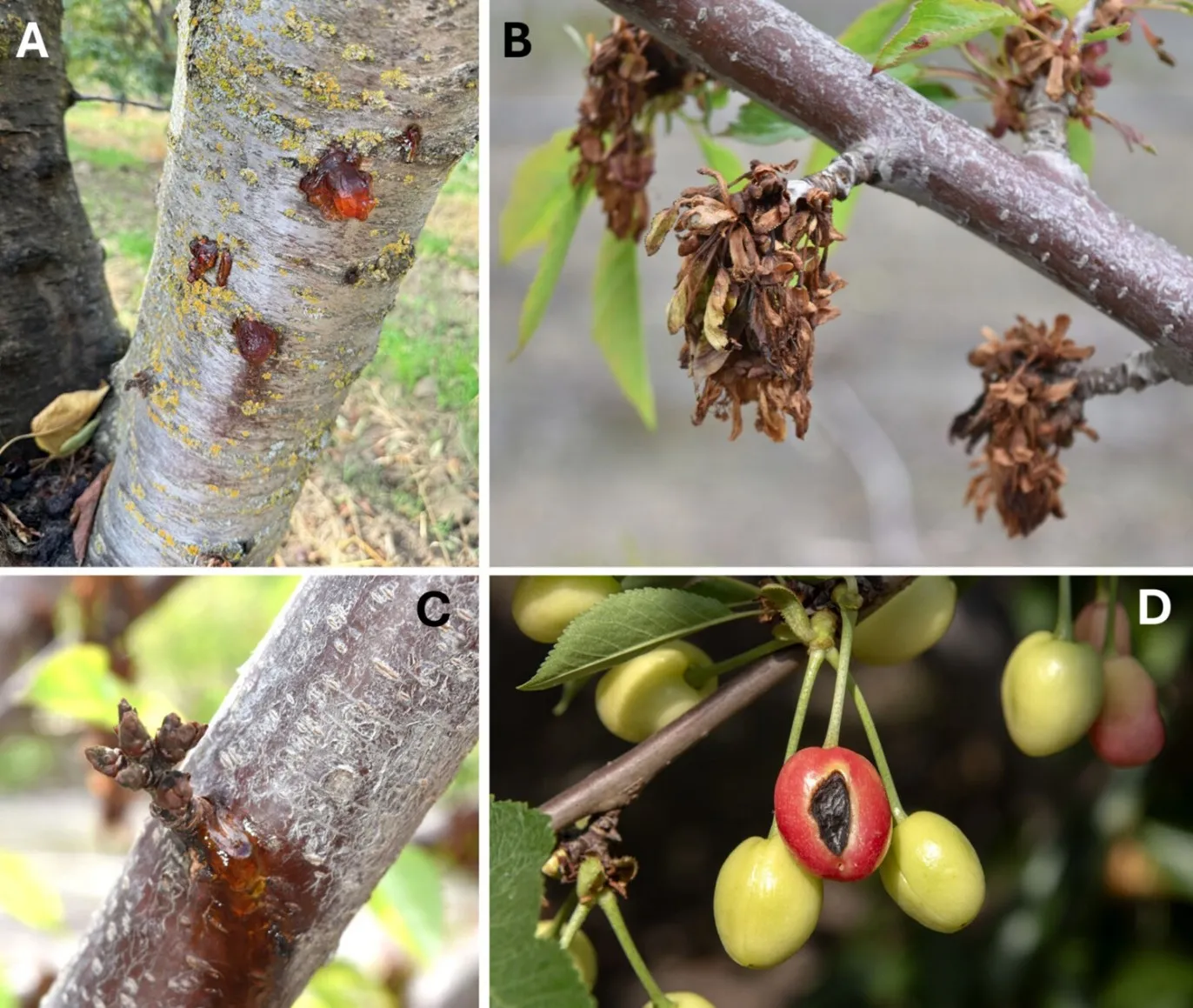The phytopathogenic fungi Cytospora sorbicola and Calosphaeria pulchella are a threat to sweet cherry trees worldwide. These pathogens are causal agents of vascular necrosis, a disease that compromises branches, shoots, and trunks, ultimately leading to plant decay.
Chile, one of the global leaders in sweet cherry cultivation and export (74,000 hectares in 2023), has recently been significantly affected by these fungal pathogens. In particular, a study conducted in Chile between 2020 and 2021 analyzed how different cultivated sweet cherry varieties – “Santina”, “Lapins”, “Regina”, and “Bing” – exhibit different levels of susceptibility to fungal infections, laying the groundwork for new phytosanitary management strategies based on genotype.
Varietal response to fungi
Through an experiment on one-year-old artificially inoculated plants, it was observed that “Santina” and “Lapins” showed the smallest necrotic lesions when infected by C. sorbicola, with averages of 13.6 mm and 14.3 mm respectively. “Bing” showed an intermediate level of damage (19.5 mm), while “Regina” exhibited the most extensive necrosis, reaching 26.1 mm.
Regarding C. pulchella, the pathogen proved even more aggressive: lesions reached up to 30.8 mm in the “Regina” variety, whereas “Lapins” remained the least susceptible (21.6 mm). These findings show that the plant's response to the pathogen is highly variety-specific, suggesting the importance of including genetic criteria in agronomic control strategies and varietal selection.
Beyond lesion measurements, the study also examined shoot dieback, which was found to be common in all varieties infected by C. sorbicola. Although the extent of dieback did not significantly differ among varieties, it served as an early indicator of physiological impairment caused by vascular necrosis.
 Figure 1. Symptoms and signs of Cytospora sp. and Calosphaeria sp. in sweet cherry trees. (A). Branch and twig dieback in adult trees during the productive stage. (B). Wood necrosis accompanied by exudations (orange arrowheads). (C). Cross section of healthy and symptomatic branches showing changes in tissue coloration. (D,F). Cytospora sp. signs in adult trees. (E,G). Calosphaeria sp. signs in adult trees. (H–J). Cytospora sp. (light blue arrowheads) and Calosphaeria sp. (green arrowheads) can be observed coexisting on the same host.
Figure 1. Symptoms and signs of Cytospora sp. and Calosphaeria sp. in sweet cherry trees. (A). Branch and twig dieback in adult trees during the productive stage. (B). Wood necrosis accompanied by exudations (orange arrowheads). (C). Cross section of healthy and symptomatic branches showing changes in tissue coloration. (D,F). Cytospora sp. signs in adult trees. (E,G). Calosphaeria sp. signs in adult trees. (H–J). Cytospora sp. (light blue arrowheads) and Calosphaeria sp. (green arrowheads) can be observed coexisting on the same host.
Colonization and diagnostics
Furthermore, fungal colonization analysis revealed that C. pulchella tends to colonize wood more effectively than C. sorbicola, indicating a greater persistence and a higher epidemiological risk.
Another significant aspect of the study was the development of an innovative diagnostic system based on PCR-HRM (High Resolution Melting), capable of rapidly and accurately distinguishing the two pathogens from fungal DNA extracted from necrotic wood. This system enables either simultaneous or individual identification of the fungi in under a week, outperforming the slower and less reliable morphology-based methods.
The system demonstrated high specificity, with no interference from other common wood-inhabiting fungi.
Conclusions and implications
In conclusion, the study highlights that the genotype of the sweet cherry tree, in addition to determining specific traits of the plant and fruit, also influences resistance to wood-decaying pathogens. For instance, the “Regina” variety was found to be highly susceptible to C. sorbicola and C. pulchella, while the “Lapins” cultivar showed overall greater tolerance.
This information is valuable for guiding breeding programs and integrated management strategies toward more tolerant cultivars, especially in a climatic context increasingly favorable to the spread of wood-decaying pathogens.
Moreover, the integration of the PCR-HRM system represents a highly valuable diagnostic tool for early monitoring of nursery material, enabling more effective and targeted phytosanitary management.
Source: Osorio-Navarro, C., Saez, C., Durán, F., Rubilar, M., Reyes-Bravo, P., Azócar, M., Estrada, V., Esterio, M., & Auger, J. (2024). The Sweet Cherry Tree Genotype Restricts the Aggressiveness of the Wood Decay Fungi Cytospora sorbicola and Calosphaeria pulchella. Microorganisms, 12(12), 2456. https://doi.org/10.3390/microorganisms12122456
Andrea Giovannini
University of Bologna (ITA)
Cherry Times - Tutti i diritti riservati













